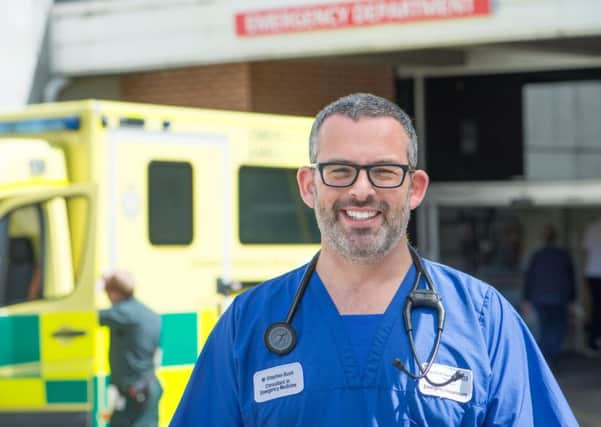Rising demands face Leeds's A&E departments


A total of 212,311 patients – which could fill the equivalent of Elland Road stadium more than five times over – came through the doors at A&E in Leeds in 2017/18, new NHS data shows.
The figure is a rise of more than 700 compared with the previous year, as emergency departments across the country continue to work under rising demand.
Advertisement
Hide AdAdvertisement
Hide AdToday the YEP is underlining the pressures staff face at A&E in Leeds – among the biggest in the UK – on the second day of our Urgent Care Week series, as part of our We Love Our NHS campaign.
It comes as Leeds General Infirmary and St James’ Hospital will be put under the national microscope next week, when the A&E ITV series, fronted by Davina McCall, hits TV screens from Tuesday.
The emergency departments at Leeds Teaching Hospitals NHS Trust saw 81.2 per cent of patients within the health service’s four-hour waiting time standard in April, according to latest figures.
It is an improvement of about 10 per cent compared to March, the trust said.
Advertisement
Hide AdAdvertisement
Hide AdWhile the percentage is below the NHS’ 95 per cent target, health bosses at the trust have warned that the wait in Leeds is often because beds are not available immediately until another patient has been discharged following their treatment.
“When we have a patient who needs admitting for surgery, further tests or treatment, we need a hospital bed,” said Dr Steve Bush, clinical director for emergency and speciality medicine at the trust.
“We can’t get any more patients into the hospital until some are discharged and therefore a bed becomes available, but we can only send people home when they are well enough and it is safe for them to do so.
“This effectively leaves some patients waiting in emergency departments (ED) for a bed on a ward and continuing to be monitored by ED doctors and nurses.
Advertisement
Hide AdAdvertisement
Hide Ad“However, once a patient is discharged, it is a very quick process to get that bed ready for another patient to be brought in from the ED.”
It comes after hospitals in Leeds - and across the country - faced one of the most challenging winters on record.
In addition to the spike in demand, two separate outbreaks of influenza added pressure to already-struggling emergency departments.
In Leeds, more than 900 patients tested positive for flu at the city’s hospitals between December 2017 and March this year.
Advertisement
Hide AdAdvertisement
Hide AdThe trust began introducing a raft of measures in winter, in an effort to cut waiting times at A&E. They include the creation of a frailty unit in 2017, where frail or elderly patients are quickly assessed by specialists to avoid unnecessary stays in hospital or A&E.
Some 660 bed days were saved in the first three months of the unit being open, as a result of its introduction.
Elsewhere, hospital bosses rolled out a ‘surge beds’ scheme, where extra temporary beds are used to increase the number of patients who can be taken in.
Some beds have been ring-fenced on surgical wards to ensure patients who have had surgery can be discharged sooner, and cut A&E transfers delays.
Advertisement
Hide AdAdvertisement
Hide AdThe city’s hospitals will feature on A&E Live series – showing patient journeys from 999 calls to treatment in the emergency department – on Tuesday, Wednesday and Thursday from 9pm on ITV next week.